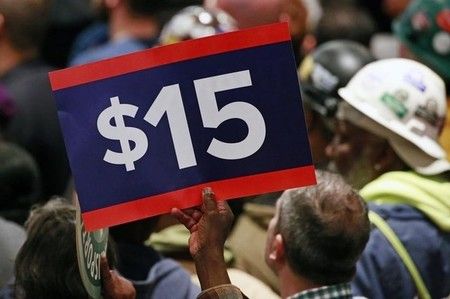Advertisement
Opioid Epidemic Hits Nearly All Age Groups in Both Rural and Urban US Areas
By Jason Owen
Advertisement - Continue reading below

NEW YORK, June 12, 2017 /PRNewswire-USNewswire/ — In rural areas around the country, in the period 2007 to 2016, private insurance claim lines with opioid abuse and dependence diagnoses were found in every age group from 13-18 years to over 80 years, and in urban areas, in every age group from 13-18 years to 71-80 years. Those findings were based on data from FAIR Health, a national, independent, nonprofit organization dedicated to bringing transparency to healthcare costs and health insurance information. As detailed in the third in a series of FAIR Health white papers on the nation’s opioid epidemic, Peeling Back the Curtain on Regional Variation in the Opioid Crisis: Spotlight on Five Key Urban Centers and Their Respective States, claim lines with opioid abuse and dependence diagnoses were more concentrated among middle-aged people in rural than urban settings, where they were spread more broadly among young and middle-aged people.
In its latest white paper, FAIR Health analyzed data from its database of more than 23 billion privately billed healthcare claims to study the opioid crisis in rural and urban settings, in the nation’s five most populous cities (Chicago, Houston, Los Angeles, New York and Philadelphia) and in their respective states during the recent ten-year period 2007 to 2016. The term “opioid-related diagnoses” referred to four diagnoses: opioid abuse, opioid dependence, heroin overdose and opioid overdose (i.e., overdose of opioids excluding heroin).
Among the findings:
- In Texas, San Antonio and its immediate surrounding areas constituted 5 percent of the population, but 66 percent of the distribution of claim lines with opioid-related diagnoses. From 2007 to 2016, San Antonio had the largest increase in Texas in claim lines with opioid-related diagnoses: 141,022 percent. By comparison, Houston, the largest city in Texas, had an increase of 876 percent, a relatively small increase in relation to the experience elsewhere.
- Of the five most populous cities in the country, Philadelphia outstripped the others when the number of claim lines with opioid-related diagnoses in each city were compared to the number of claim lines for all medical care in the relevant state from 2007 to 2016. Claim lines with opioid-related diagnoses in Philadelphia were 1.28 percent of all claim lines in Pennsylvania in 2016, whereas, in each of the other cities that year, claim lines with opioid-related diagnoses were less than 0.1 percent of all claim lines in the corresponding state.
- Of six regions in California, the greatest increase in claim lines with opioid-related diagnoses from 2007 to 2016 was in southern California (including Los Angeles), where the increase was 31,897 percent.
- In New York State, New York City constituted 43 percent of the population but only 13 percent of the distribution of claim lines with opioid-related diagnoses.
- In both Illinois and Pennsylvania, claim lines with an opioid dependence diagnosis occurred more frequently in males than females in all age groups— but the gap narrowed over the age of 50 years, with males at 55 percent and females at 45 percent.
- In the distribution of top five procedure codes associated with opioid-related diagnoses in 2016, only one code was shared by all five states under study — HCPCS code G0479, “drug test(s), any number of drug classes, not optical.” The variation in top procedure codes suggested different approaches to treatment of opioid-related diagnoses.
FAIR Health President Robin Gelburd commented: “FAIR Health is committed to using its vast data repository to shed light on the opioid crisis. By spotlighting the substantial regional variation in opioid-related diagnoses and procedures, we hope to contribute to the work of those addressing this national epidemic.”
For the full white paper, click here.
Follow us on Twitter @FAIRHealth
About FAIR Health
FAIR Health is a national, independent, nonprofit organization dedicated to bringing transparency to healthcare costs and health insurance information through data products, consumer resources and health systems research support. FAIR Health oversees the nation’s largest collection of healthcare claims data, which includes a repository of over 23 billion billed medical and dental procedures that reflect the claims experience of over 150 million privately insured individuals, and separate data representing the experience of more than 55 million individuals enrolled in Medicare. Certified by the Centers for Medicare & Medicaid Services (CMS) as a Qualified Entity, FAIR Health receives all of Medicare Parts A, B and D claims data for use in nationwide transparency efforts. FAIR Health licenses its privately billed data and data products—including benchmark modules, data visualizations, custom analytics, episodes of care analytics and market indices—to commercial insurers and self-insurers, employers, hospitals and healthcare systems, government agencies, researchers and others. FAIR Health has earned HITRUST CSF and Service Organization Controls (SOC 2) certifications by meeting the rigorous data security standards of those organizations. As a testament to FAIR Health’s data security and validation protocols, its data have been incorporated in statutes and regulations around the country and designated as the official, neutral data source for a variety of state health programs, including workers’ compensation and personal injury protection (PIP) programs. FAIR Health data serve as an official reference point in support of certain state balance billing laws that protect consumers against bills for surprise out-of-network and emergency services. FAIR Health also uses its database to power a free consumer website available in English and Spanish and as an English/Spanish mobile app, which enable consumers to estimate and plan their healthcare expenditures and offer a rich educational platform on health insurance. The website has been honored by the White House Summit on Smart Disclosure, the Agency for Healthcare Research and Quality (AHRQ), URAC, the eHealthcare Leadership Awards, appPicker, Employee Benefit News and Kiplinger’s Personal Finance. FAIR Health also is named a top resource for patients in Elisabeth Rosenthal’s new book, An American Sickness: How Healthcare Became Big Business and How You Can Take It Back. For more information on FAIR Health, visit fairhealth.org.
SOURCE FAIR Health
Advertisement - Continue reading below










